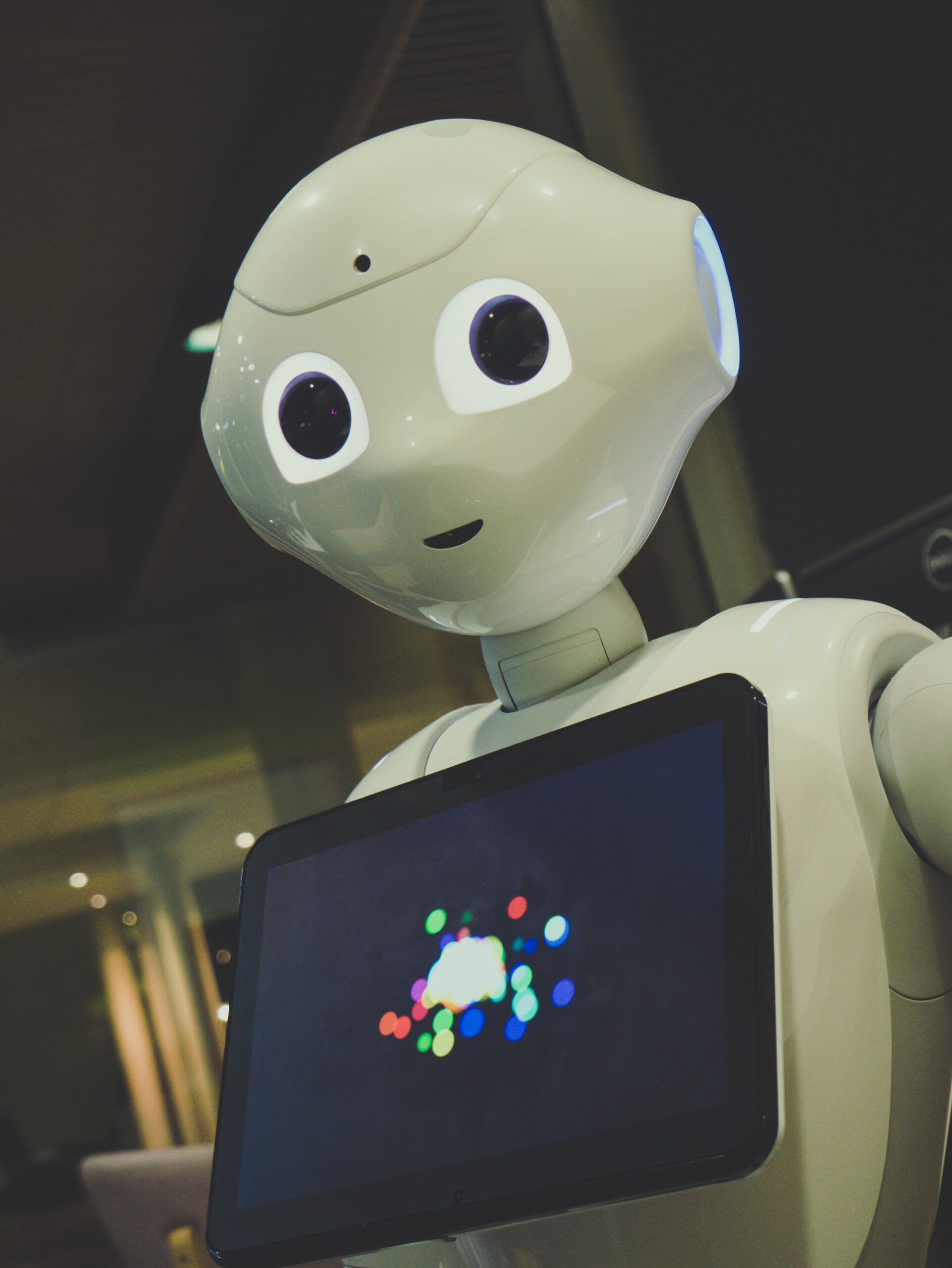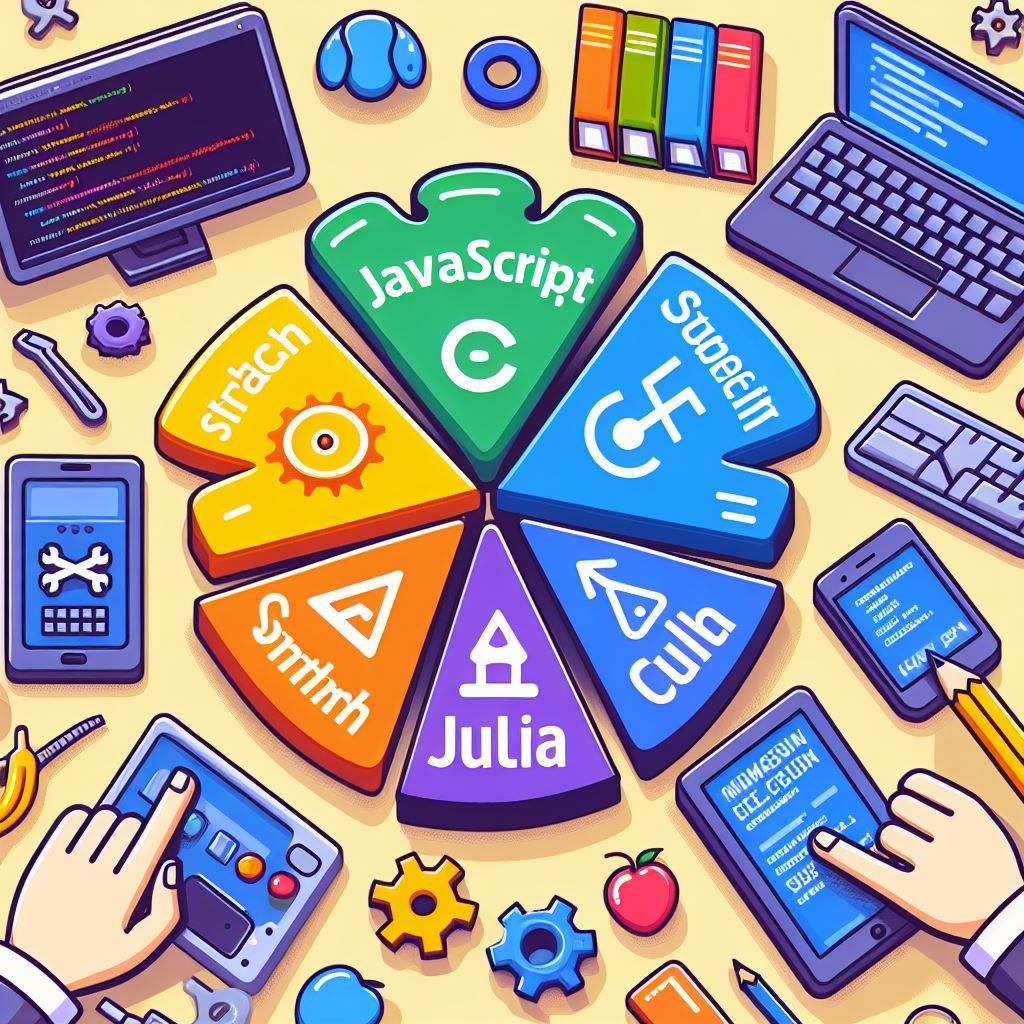Introduction: scratch vs. javascript vs. c vs. julia vs. cpp
In the dynamic realm of programming languages, developers often confront the challenge of selecting the optimal tool for their projects. This article delves into the characteristics, advantages, disadvantages, top known projects, sample code, tips, and tricks of five popular programming languages: Scratch, JavaScript, C, Julia, and C++.
1. Scratch: scratch vs. javascript vs. c vs. julia vs. cpp
Definition:
Designed primarily for children and beginners, Scratch is a visual programming language boasting a block-based interface that empowers users to craft a wide array of creations, ranging from animations to games and interactive stories.
Advantages:
- Ideal for beginners due to its intuitive drag-and-drop interface.
- By promoting logical thinking and nurturing problem-solving skills, Scratch empowers learners to cultivate essential cognitive abilities, thereby equipping them with the necessary tools to tackle intricate challenges not only within the realm of programming but also in various aspects of their lives.
- Incorporating its unique capability to provide real-time visual feedback, Scratch effectively captures the interest of learners spanning various age groups. This feature not only fosters an engaging learning experience but also encourages active participation, thereby facilitating the acquisition and retention of essential skills.
Disadvantages:
- Limited scalability for complex projects.
- Not suitable for high-performance applications or professional software development.
- May not offer the depth of learning compared to text-based languages.
Top Known Projects:
- Scratch.mit.edu hosts a vast collection of user-created projects ranging from simple animations to elaborate games.
- ScratchJr, a simplified version of Scratch, designed for younger children to learn programming concepts.
Sample Code:
scssCopy code
when green flag clicked forever move (10) steps
Tips and Tricks:
- Encouraging a culture of experimentation, Scratch empowers users to delve into creativity by remixing and refining existing projects. This approach not only fosters exploration but also cultivates a dynamic learning environment conducive to continuous improvement and innovation.
- Explore the vibrant online community within Scratch to discover a plethora of inspiration and find invaluable support. Engage actively with fellow creators, exchange ideas, and seek guidance in this collaborative environment. This dynamic platform not only fosters creativity but also encourages innovation and facilitates continuous improvement. Immerse yourself fully in this interactive community to gain diverse perspectives and experiences, enriching your learning journey and igniting your passion for programming.
2. JavaScript:
Definition: JavaScript is a versatile scripting language primarily used for web development. It enables dynamic content creation, interactive web pages, and server-side applications.
Advantages:
- Furthermore, JavaScript enjoys widespread support across all modern web browsers.
- Extensive libraries and frameworks (e.g., React, Angular) for frontend and Node.js for backend development.
- Moreover, JavaScript offers the flexibility to develop a broad spectrum of applications, spanning from simple scripts to complex enterprise solutions.
Disadvantages:
- Additionally, asynchronous programming in JavaScript may result in callback hell and convoluted code structures.
- Lack of strong typing can result in runtime errors that are harder to catch.
- Security vulnerabilities like cross-site scripting (XSS) can pose risks in web applications.
Top Known Projects:
- React.js: A popular frontend library for building user interfaces.
- Node.js: A server-side JavaScript runtime for building scalable network applications.
- Vue.js: A progressive JavaScript framework for building interactive web interfaces.
Sample Code:
javascriptCopy code
function greet(name) { return 'Hello, ' + name + '!'; } console.log(greet('World'));
Tips and Tricks:
- Embrace modern JavaScript features like arrow functions and template literals for cleaner code.
- Practice modularization to improve code maintainability and reusability.
3. C:
Definition: Originating from C, C++ emerges as a versatile, general-purpose programming language distinguished by its advanced features catered specifically to object-oriented programming (OOP).
Advantages:
- As a result of its high performance and efficiency, C stands out as particularly well-suited for resource-constrained environments. Therefore, it serves as an ideal choice for projects with limited resources or strict performance requirements.
- Due to its emphasis on close-to-hardware control and low-level memory management, developers must pay careful attention to memory allocation and deallocation in C. This ensures the effective mitigation of potential issues that may arise during the development process.
- Furthermore, being portable across various hardware architectures, C benefits from a rich ecosystem of compilers and toolchains.
Disadvantages:
- Consequently, vigilant attention to memory allocation and deallocation is essential to mitigate these potential issues effectively.
- Consequently, developers may encounter limitations in functionality and productivity when working with languages that lack these modern features.
- Steeper learning curve compared to more abstract languages.
Top Known Projects: scratch vs. javascript vs. c vs. julia vs. cpp
- Linux Kernel: The core of the Linux operating system is primarily written in C.
- MySQL: A popular relational database management system written in C and C++.
- Git: A distributed version control system developed by Linus Torvalds, implemented in C.
Sample Code:
cCopy code
#include <stdio.h> int main() { printf("Hello, World!\n"); return 0; }
Tips and Tricks:
- It is imperative to exercise vigilance in memory management, thereby mitigating the risk of encountering prevalent issues such as buffer overflows, which can undermine the stability and security of software systems.
- This approach not only allows for greater flexibility in tailoring code to different build environments but also contributes to clearer code structure and improved maintainability.
4. Julia:
Definition: Julia is a high-level, high-performance programming language designed for numerical and scientific computing. It combines the ease of use of dynamic languages with the speed of compiled languages.
Advantages:
- With Just-in-time (JIT) compilation, developers can achieve performance levels that closely approximate native execution speeds, all while maintaining high levels of productivity and code flexibility.
- The Julia programming language boasts a rich ecosystem teeming with an extensive array of packages tailored specifically for mathematical and scientific computing, facilitating seamless integration of advanced functionalities and enhancing the versatility of computational workflows.
- Julia seamlessly integrates with a multitude of programming languages, such as Python, C, and Fortran, facilitating a smooth amalgamation of various software components. This harmonious compatibility not only fosters collaboration but also empowers developers with unparalleled flexibility in selecting tools and libraries..
Disadvantages: scratch vs. javascript vs. c vs. julia vs. cpp
- Relatively smaller community compared to more established languages like Python or R.
- While Julia excels in scientific computing and numerical analysis, its support for non-scientific domains and application development is somewhat limited, presenting potential challenges for developers looking to extend the language’s usage beyond its primary focus.
- Immature tooling and ecosystem compared to more mature languages.
Top Known Projects:
- JuMP: A popular package for mathematical optimization in Julia.
- DifferentialEquations.jl: A comprehensive package for solving differential equations.
- DataFrames.jl: A powerful library for working with tabular data similar to pandas in Python.
Sample Code:
juliaCopy code
function greet(name) return "Hello, $name!" end println(greet("World"))
Tips and Tricks:
- Harnessing Julia’s multiple dispatch feature empowers developers to craft code that is not only generic and versatile but also highly efficient, enabling the creation of optimized solutions for diverse computational tasks.
- To enhance code efficiency, it’s imperative to thoroughly profile and optimize performance-critical sections, leveraging built-in tools such as @time and @profile within Julia’s ecosystem for insightful analysis and refinement of computational workflows.
5. C++:scratch vs. javascript vs. c vs. julia vs. cpp
Definition: C++ is a general-purpose programming language that builds upon the foundations of C, incorporating additional features tailored for object-oriented programming (OOP). Renowned for its versatility, it finds extensive application in the development of high-performance applications, system software, and game development alike.
Advantages:
- With powerful abstraction mechanisms such as classes, inheritance, and templates, developers can construct intricate systems that meet diverse requirements.
- With performance comparable to that of C, as well as additional language features aimed at improving productivity, C++ emerges as a powerful and compelling option for various software development initiatives.
- Supported by a robust community network, coupled with an expansive ecosystem of libraries and frameworks, C++ stands out as a language rich in resources, empowering developers with a myriad of tools for their projects.
Disadvantages:
- Complex syntax and steep learning curve, especially for beginners.
- The manual management of memory in programming entails the inherent risk of memory leaks and pointer errors, thereby necessitating meticulous attention to detail during the allocation and deallocation processes.
- The standardization process, while crucial for ensuring consistency and interoperability, may often proceed at a leisurely pace, potentially resulting in fragmentation across various compiler implementations and divergent interpretations of language specifications.
Top Known Projects:
- TensorFlow: An open-source machine learning framework developed by Google, extensively using C++.
- Mozilla Firefox: A popular web browser developed using C++ and Rust.
- Unreal Engine: A widely-used game engine developed primarily in C++.
Sample Code:
cppCopy code
#include <iostream> int main() { std::cout << "Hello, World!" << std::endl; return 0; }
Tips and Tricks:
- Adopting contemporary features of C++ such as smart pointers and standard library algorithms not only fosters safer and more expressive code but also facilitates the development of robust and efficient software solutions.
- By adhering to best practices such as RAII (Resource Acquisition Is Initialization), developers can effectively manage resources, thereby ensuring efficient resource utilization while promoting robustness and scalability in their software projects.
Conclusion:
Each programming language discussed in this article offers unique strengths and weaknesses suited to different use cases and preferences. Whether you’re a beginner exploring the fundamentals of programming or a seasoned developer tackling complex projects, understanding the nuances of these languages can empower you to make informed decisions and excel in your programming journey.
- Scratch: Scratch – Imagine, Program, Share
- JavaScript: JavaScript | MDN Web Docs
- C: The C Programming Language
- Julia: The Julia Programming Language
JavaScript vs. C vs. Julia vs. Cpp
Related Posts
- 10000
 Choosing the right programming language can be a daunting task, especially with the wide array of options available. In this article, we will compare and contrast five popular programming languages: Scratch, JavaScript, C, Julia, and C++. By understanding the strengths and weaknesses of each language, you can make an informed…
Choosing the right programming language can be a daunting task, especially with the wide array of options available. In this article, we will compare and contrast five popular programming languages: Scratch, JavaScript, C, Julia, and C++. By understanding the strengths and weaknesses of each language, you can make an informed… - 35
 Introduction As the field of artificial intelligence (AI) continues to advance at an unprecedented pace, there is a growing need to address the ethical implications of this technology. While AI holds immense potential to revolutionize various industries and improve our lives, concerns about bias, transparency, and accountability have also emerged.…
Introduction As the field of artificial intelligence (AI) continues to advance at an unprecedented pace, there is a growing need to address the ethical implications of this technology. While AI holds immense potential to revolutionize various industries and improve our lives, concerns about bias, transparency, and accountability have also emerged.… - 31
 The Global Phenomenon of Formula 1 Formula 1, with its roaring engines and adrenaline-fueled races, has captured the hearts of millions of motorsport enthusiasts worldwide. As the 2023-24 season unfolds, fans are eagerly searching for the latest scores, highlights, and news to stay connected with the action-packed world of F1.…
The Global Phenomenon of Formula 1 Formula 1, with its roaring engines and adrenaline-fueled races, has captured the hearts of millions of motorsport enthusiasts worldwide. As the 2023-24 season unfolds, fans are eagerly searching for the latest scores, highlights, and news to stay connected with the action-packed world of F1.… - 30


